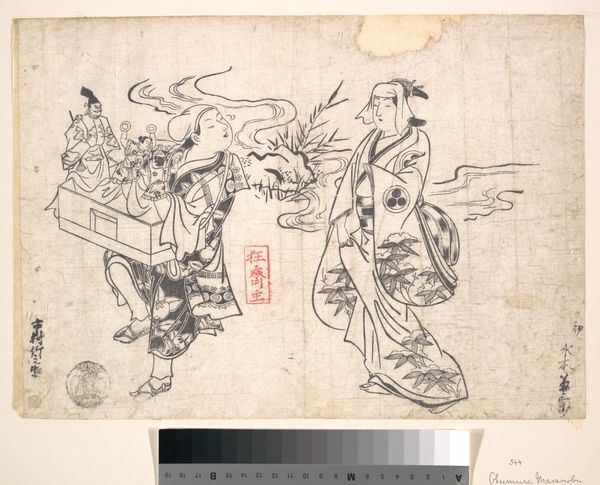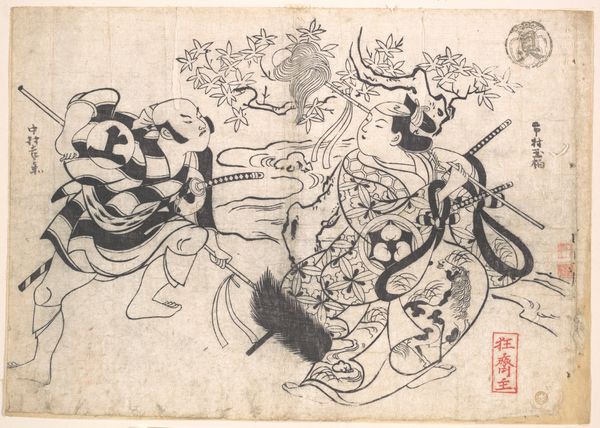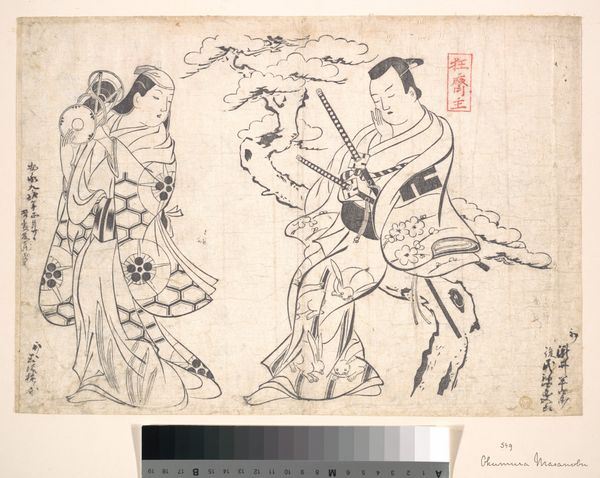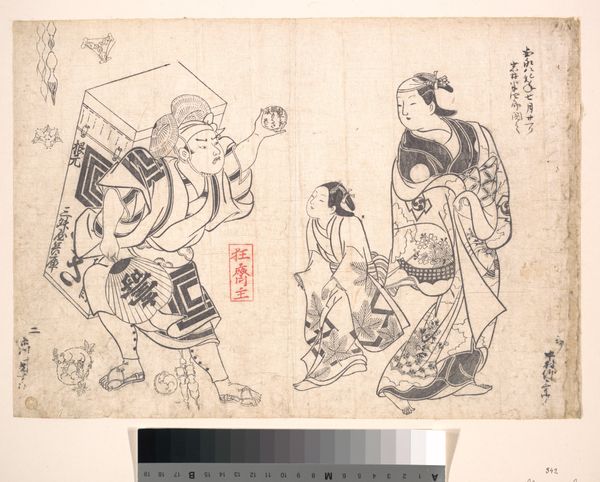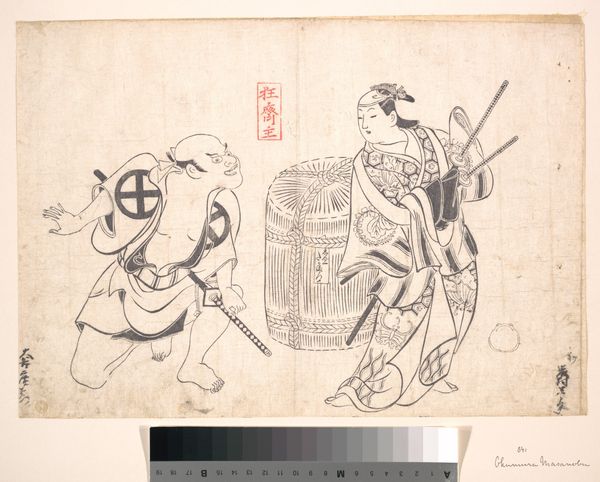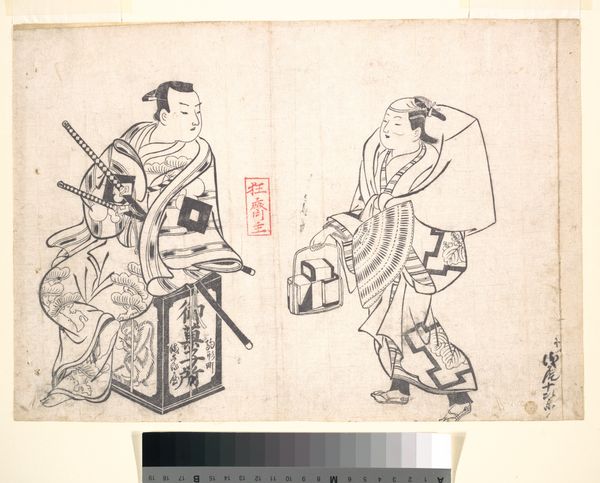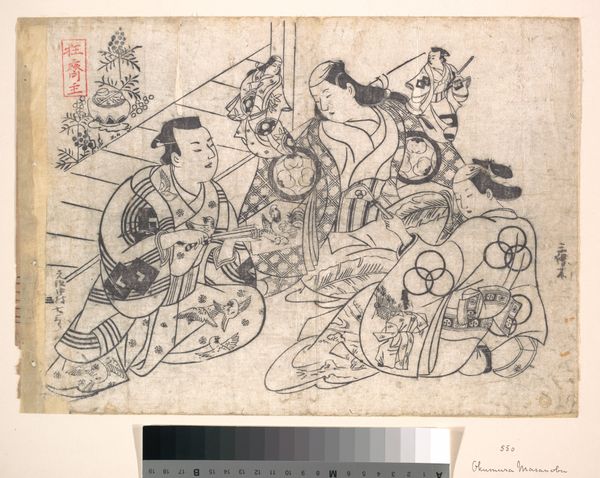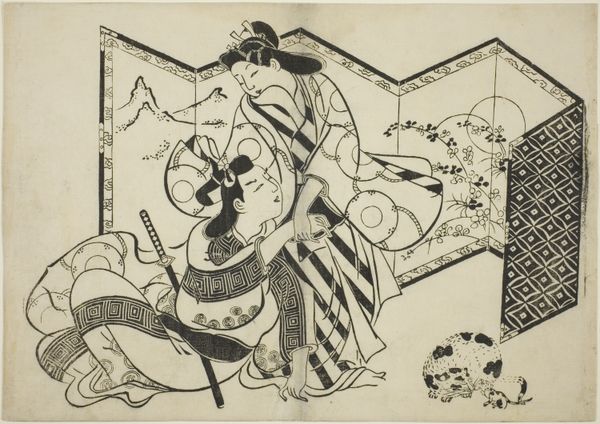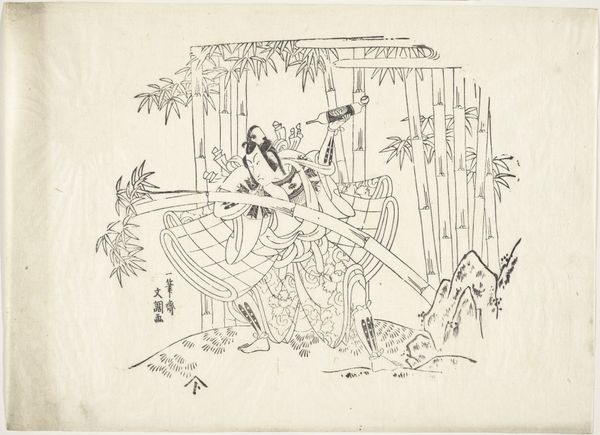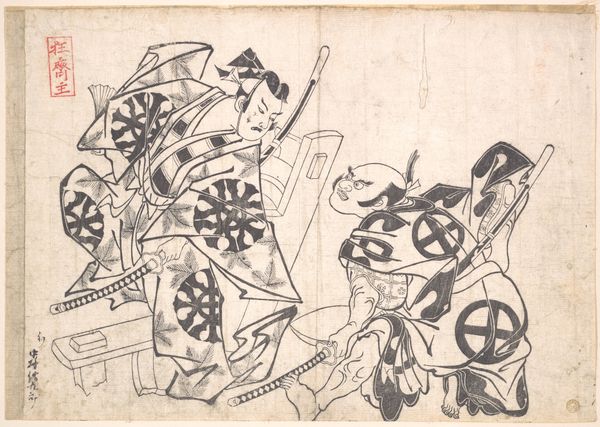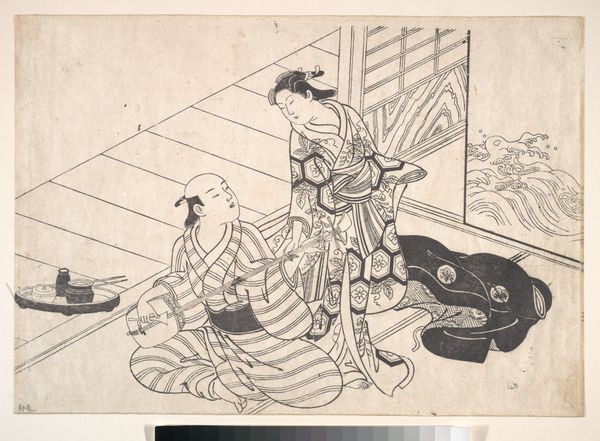
print, ink
#
ink drawing
#
ink painting
# print
#
asian-art
#
ukiyo-e
#
figuration
#
ink
Dimensions: 10 3/8 x 14 3/4 in. (26.4 x 37.5 cm)
Copyright: Public Domain
Editor: So, this is Okumura Masanobu's "Ichikawa Danjūrō I as Soga Gorō," made between 1690 and 1700, a print using ink. There's something really striking about its rawness, almost like a sketch but so deliberately composed. How do you interpret the figure within the broader context of its time? Curator: The power of this image rests precisely in understanding its socio-cultural context. Masanobu, through this ukiyo-e print, isn't just depicting an actor; he's engaging in the popular culture of Edo-period Japan, specifically kabuki theatre. Think about the role of kabuki in providing a space for societal commentary and challenging social norms. What kind of commentary might this particular figure represent, considering the legendary status of Soga Gorō? Editor: He looks… intense! All that black ink emphasizes his strength, the determined look in his eyes. The ropes and rocks behind him, juxtaposed with his costume, make me wonder if there's a clash being represented here. Curator: Exactly! Consider the dynamics of power embedded within theatrical representation itself. How does the portrayal of Ichikawa Danjūrō, a celebrated actor embodying a legendary figure, influence the public's perception of heroism and masculinity? Was Masanobu celebrating a specific performance or solidifying the actor’s public image? Editor: So, it's not just about the art itself, but about the star power and the story both reflected back on society and cemented those values through theatre and art? Curator: Precisely! The image becomes a crucial element in constructing and reinforcing narratives about identity, duty, and honor circulating in Edo society. Understanding these prints allows us insight into the social and political dimensions of Japanese popular culture during this period. What did this mean for the public’s perception of social structures? Editor: That’s a fascinating point. Seeing the actor not just as a performer, but as a shaper of societal values through his performances, completely shifts how I understand the artwork. Curator: Indeed. By examining this print through the lens of cultural history, we unravel the complex interplay between art, theater, and social ideology in early modern Japan. It prompts a deeper exploration of the forces shaping collective identities.
Comments
No comments
Be the first to comment and join the conversation on the ultimate creative platform.
